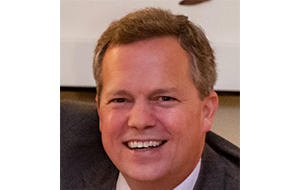Since coming to Fiserv in 2001 as director of development, Brian Sondergaard has been working to bring the concept of enterprise agile to the organization, as explained in part one of my two-part interview with him. Now Sondergaard is CIO for digital channels, and he’s looking to extend the agile enterprise concept to the IT operations group. The concept is more commonly known as DevOps, and here Sondergaard explains how to get the job done.

The Enterprisers Project (TEP): Fiserv has succeeded in implementing enterprise agile, breaking down silos between groups and getting them working toward a common shared purpose. Now the next phase is bringing the same concept to IT operations, meaning DevOps. How is that job different from what you’ve done with enterprise agile?
 Sondergaard: DevOps is even more challenging. When we talk IT operations, we have systems of delivery that are deeply ingrained in our systems. They’re dependent on not just people and practices, but deeply-rooted technologies and processes that wrap around them to deliver reliable solutions. As we move into an era of DevOps over the next five years, accepting the magnitude of change that comes across IT ops is an important part of the journey.
Sondergaard: DevOps is even more challenging. When we talk IT operations, we have systems of delivery that are deeply ingrained in our systems. They’re dependent on not just people and practices, but deeply-rooted technologies and processes that wrap around them to deliver reliable solutions. As we move into an era of DevOps over the next five years, accepting the magnitude of change that comes across IT ops is an important part of the journey.
TEP: So what’s going to change in next five years vs. what’s already changed?
Sondergaard: DevOps expands enterprise agile from product management and development all the way to IT operations. We’ve done enterprise agile. We now create apps in a way that focuses on the client and maximizes throughput and quality. But that hits a barrier when you get to traditional IT operations. The changes that will be taking place over next five years create the ability to take enterprise agile into IT operations. It means improved platforms, improved automation, improved collaboration across development and ops. It means a constant flow of value into production.
TEP: How do you get there?
Sondergaard: The thing I’ve found most successful is to bring influential leaders together from different organizational elements and take them through a series of workshops to gain agreement on what we look like in the eyes of our clients. Universally, when we start there, we can all come to an agreement that there’s opportunity to do a better job for our customers.
Once we have that agreement among leaders of different organizational elements, then it becomes a matter of partnering on improvement. What are the biggest pain points, and how do we work together? How do we knock down barriers? Almost always there’s a top five list of places where we’re doing a good job in our independent silos but could do a great job if we rethink the approach and do it together.
For example, if we rethink how we do application deployment and validation. Rather than throwing large releases over the wall to operations, how can we bring teams together to identify tooling, processes, and practices that can be deployed to automate provisioning and production deployment fully? This significantly improves time to market by increasing throughput and quality.
TEP: Can you cite any examples of areas where have you been successful with any of these new processes or methods?
Sondergaard: In several organizations, using the same people, technology, teams and products, we’ve established this integrated end-to-end system of delivery and improved productivity by more than 200 percent. This has allowed us to recapture that capacity for deployment to other important initiatives. We measured productivity in simple terms: what’s the value being created regarding the business and its clients? By getting everyone focused on that value and emphasizing the end-to-end flow of that value through the integrated system of delivery, we’ve been able to objectively measure increases of over 200 percent in multiple areas of the business.
TEP: In what areas are you still struggling and hope to improve?
Sondergaard: We’re a large organization with people across the globe. We have varying levels of maturity, varying degrees of adoption of these practices. While we have significantly improved the level of partnership across different lines of business over recent years, that will continue to be a focus — helping leaders partner across business lines to learn from one another and elevate what their experiences have been, share things that they’re learning so others across the enterprise can benefit. This way we can raise up the best practices to something that benefits the enterprise as a whole.
TEP: What lessons would you share with other IT leaders?
Sondergaard: This is not an IT problem, and you can’t do this alone. The most impactful improvements lie in strategy and portfolio management, and in the overall culture of delivery. Some folks in IT go to tackle this by installing simple Scrum in their development organization. While that has some benefits, it doesn’t materially impact what’s important to our clients. You need systemic change spanning from portfolio management through delivery and into production. You can’t do that alone. It has to be in partnership with peers across the business – product management, strategy, IT operations and development are all central to this enterprise transformation. Only by bringing those constituents together and looking at the end-to-end value can you achieve the desired improvements.



